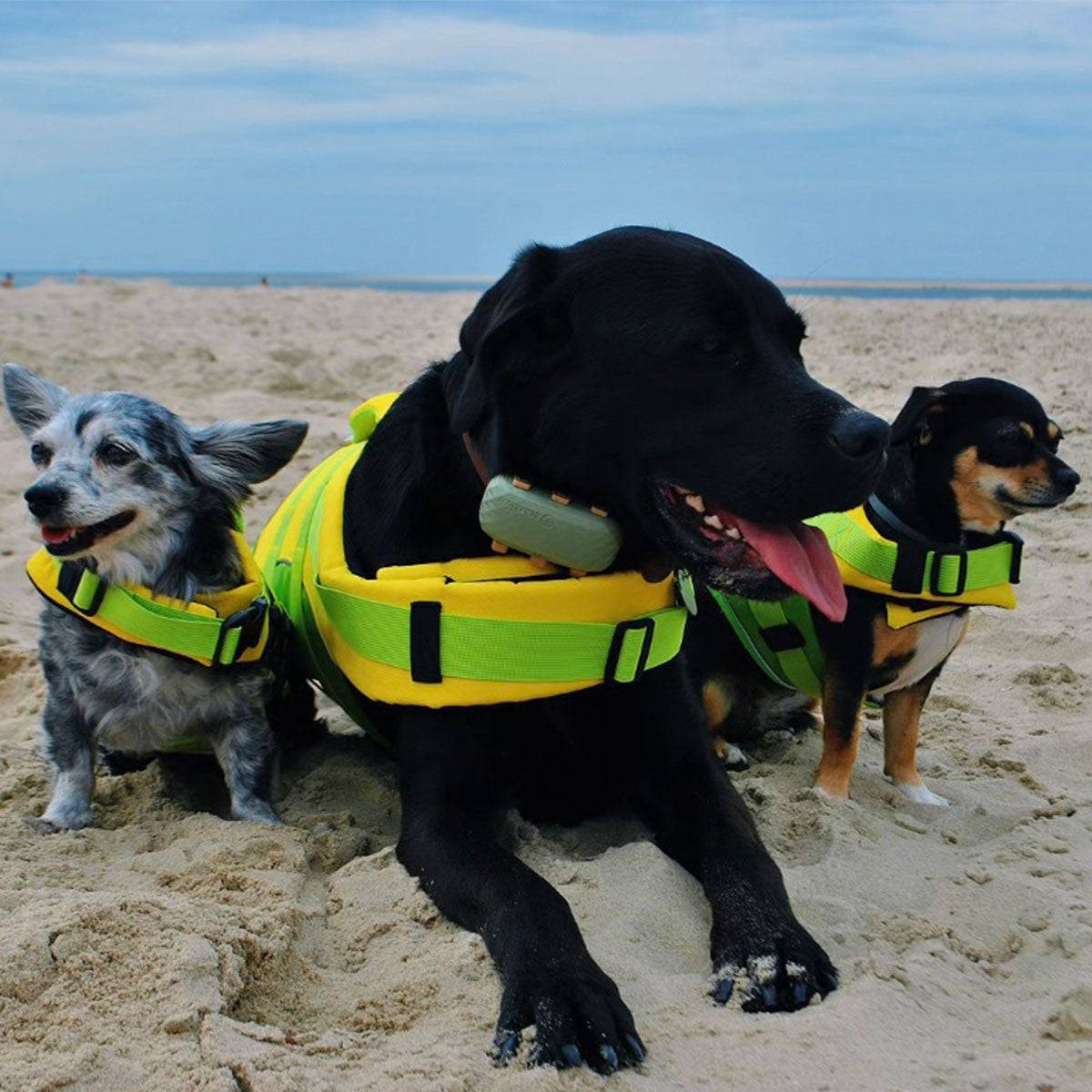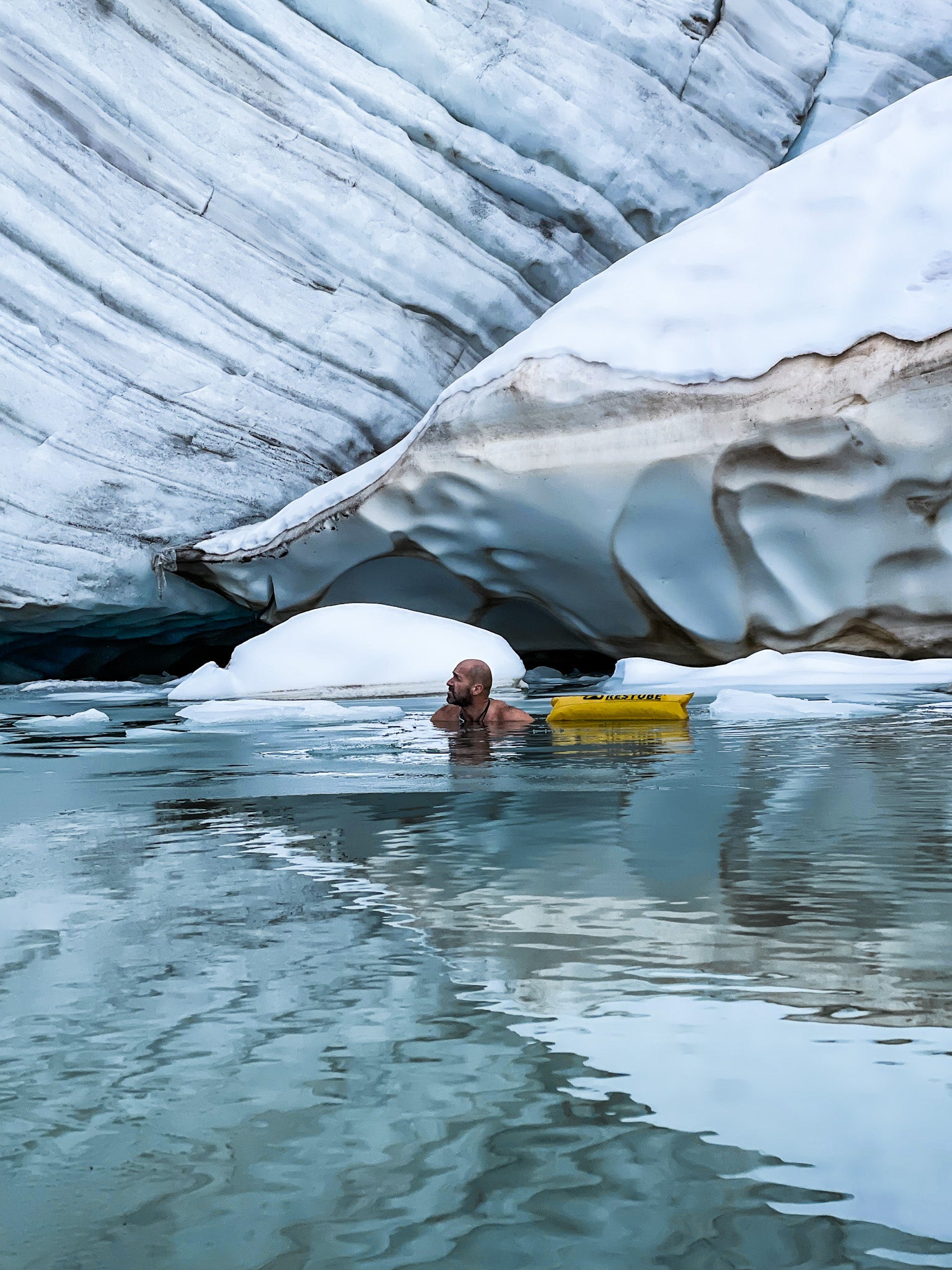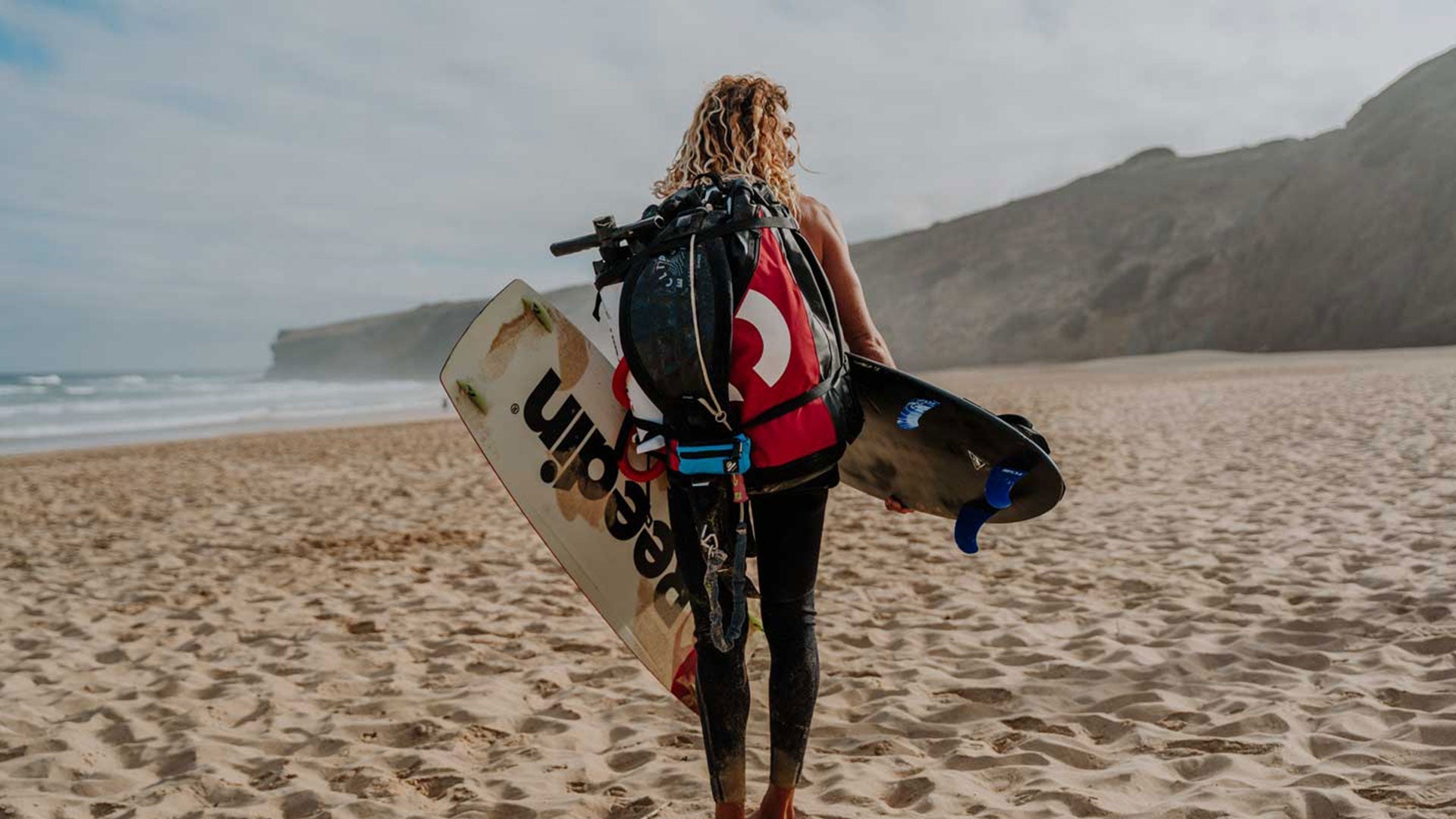Fotocredit Josef Köberl @ Barbara Anderl
Lerne die Gesundheitsvorteile kennen und erhalte Tipps für deine Sicherheit
In den letzten Jahren hat sich eine ungewöhnliche Sportart weltweit verbreitet und begeistert immer mehr Menschen: das Eisschwimmen, Eisbaden oder auch Winterschwimmen genannt. Bei dieser extremen Disziplin tauchen mutige Menschen in eiskalte Gewässer und schwimmen in Temperaturen nahe dem Gefrierpunkt. Doch was genau steckt hinter diesem ungewöhnlichen Trend, und warum zieht er immer mehr Menschen in seinen Bann?
Wir sind dem Phänomen Eisschwimmen auf die Spur gegangen und haben die Geschichte, Gesundheitsvorteile und Sicherheitsaspekte für dich erkundet. Außerdem stellen wir dir mit Josef Köberl einen Experten in Sachen Eisschwimmen vor, der in Kursen und Trainings sein Wissen an Interessierte auch weitergibt.
Die Geschichte des Eisschwimmens
Das Eisschwimmen ist keine gänzlich neue Erscheinung. In verschiedenen Teilen der Welt, insbesondere in Ländern mit langen, kalten Wintern wie Russland und Finnland, praktizierten Menschen schon seit Jahrhunderten das Schwimmen in zugefrorenen Seen und Flüssen. Dort diente es nicht nur der sportlichen Betätigung, sondern auch als eine Art Mutprobe und kulturelles Ritual.
Der moderne Trend des Eisschwimmens hat jedoch in den letzten Jahrzehnten an Fahrt aufgenommen. Heute ist Eisschwimmen weit mehr als nur eine Tradition. Es gibt mittlerweile organisierte Wettbewerbe und Veranstaltungen rund um den Globus, bei denen sich Eisschwimmer messen können. Diese Events ziehen nicht nur erfahrene Athleten an, sondern auch immer Hobby-Eisschwimmer und Eisschwimmerinnen, die die Herausforderung suchen.
Eisschwimmen als Gesundheits-Booster
Auf den ersten Blick mag es nicht offensichtlich erscheinen, aber Eisschwimmen bietet eine Vielzahl an gesundheitlichen Vorteilen. Sie sind sicherlich auch ein Grund, warum das Eisschwimmen immer beliebter wird.

"Kaltes Wasser hat mich als Mensch verändern. Früher war ich impulsiver, wenig ausgeglichen, fokussiert ja, aber ich hatte nicht so einen starken ausdauernden Fokus, nicht diese mentale und physische Stärke."
Josef Köberl
Stärkung des Immunsystems:
Das Eintauchen in kaltes Wasser kann das Immunsystem stimulieren und die Produktion von weißen Blutkörperchen fördern, was sehr wichtig zur Abwehr von Krankheiten ist.
Verbesserte Durchblutung:
Die Kälte des Wassers lässt die Blutgefäße verengen, man spricht von einer Vasokonstriktion. Nach dem Schwimmen in kaltem Wasser kommt es zu einer Vasodilatation, bei der sich die Gefäße wieder weiten. Dieser Wechsel kann die Durchblutung verbessern und den Blutfluss ankurbeln.
Stressabbau:
Das Eisschwimmen erfordert eine erhebliche mentale Stärke und kann dazu beitragen, Stress abzubauen und die psychische Belastbarkeit zu steigern.
Steigerung der Energie:
Viele Eisschwimmer berichten von einem anhaltenden Energieschub nach dem Schwimmen in kaltem Wasser, der den ganzen Tag anhält.
Fettverbrennung:
Der Kälte ausgesetzt sein, kann den Stoffwechsel anregen und somit die Fettverbrennung fördern.
Erhöhte Widerstandsfähigkeit gegen Kälte:
Eisschwimmer entwickeln im Laufe der Zeit eine höhere Toleranz gegenüber Kälte, und das kann durchaus auch im Alltag von Vorteil sein.
Eine besondere Form der Atmung stellt die Wim-Hof-Methode dar. Dabei wird wiederholt zügig ein und ausgeatmet und anschließend eine Atempause gemacht.
Sicherheit beim Eisschwimmen
Obwohl Eisschwimmen viele gesundheitliche Vorteile bietet – vergiss nie – ist es nicht ohne Risiken! Die größte Gefahr beim Eisschwimmen ist die Hypothermie, die auftritt, wenn der Körper zu viel Wärme verliert und die Körpertemperatur gefährlich abfällt.
Um sicher Eisschwimmen zu betreiben, sind Sicherheitsvorkehrungen zu treffen! Nachfolgend findest du wichtige Punkte, die es zu beachten gilt.
Vorbereitung an Land:
Wärme den Körper mit sanften Übungen auf, bevor du ins kalte Wasser steigst. Achte auf eine ruhige und gleichmäßige Atmung.
Langsame Gewöhnung:
Anfänger sollten sich nicht sofort in eiskaltes Wasser stürzen. Es ist ratsam, langsam zu beginnen und sich allmählich an die niedrigen Temperaturen zu gewöhnen. Kalte Duschen können dir dabei helfen.
Beaufsichtigung:
Das Eisschwimmen sollte niemals alleine gemacht werden. Es ist wichtig, dass du jemanden in der Nähe hast, der dir im Notfall helfen kann.
Aufenthaltsdauer:
Die Zeit im kalten Wasser sollte begrenzt sein, um das Risiko von Hypothermie zu minimieren. Übertreibe es also nicht, habe am besten selbst eine Uhr dabei, und gehe nicht über dein persönliches Limit hinaus.
Zusätzlicher Auftrieb:
Um für den Fall der Fälle gerüstet zu sein, ist zusätzlicher Auftrieb ein Muss. Mit der RESTUBE Sicherheitsboje ist der Auftrieb dezent in der Tasche verstaut und nur einen Zug am Auslöser entfernt. Möchtest du permanente Sichtbarkeit und griffbereiten Auftrieb, empfehlen wir die SCHWIMMBOJE.
Ausrüstung:
Neoprenschuhe, Mütze oder Badekappe und Handschuhe schützen deinen Körper vor zu starkem Wärmeverlust.
Personen mit Gesundheitsproblemen oder Risiken müssen vor dem Eisschwimmen auf jeden Fall Rücksprache mit ihrem Arzt halten. Eisschwimmen ist nicht für jeden Menschen geeignet.
Lerne vom Profi!
Josef Köberl ist Rekord-Eisschwimmer und veranstaltet regelmäßig Kurse und Trainings für alle, die Eisschwimmen selbst ausprobieren wollen.
Hier findest du Infos zu den Kursen und Trainings mit Josef Köberl.
Und um keine Updates und Neuigkeiten von Josef zu verpassen, folge ihm am besten auf Instagram!
Ich hatte 2021 das Vergnügen, Josef bei einer seiner Veranstaltung persönlich kennenzulernen.
Motiviert von allen Teilnehmer*innen, habe ich mir die Gelegenheit nicht entgehen lassen und bin selbst ins eiskalte Wasser. Hier der Video-Beweis. 😉





